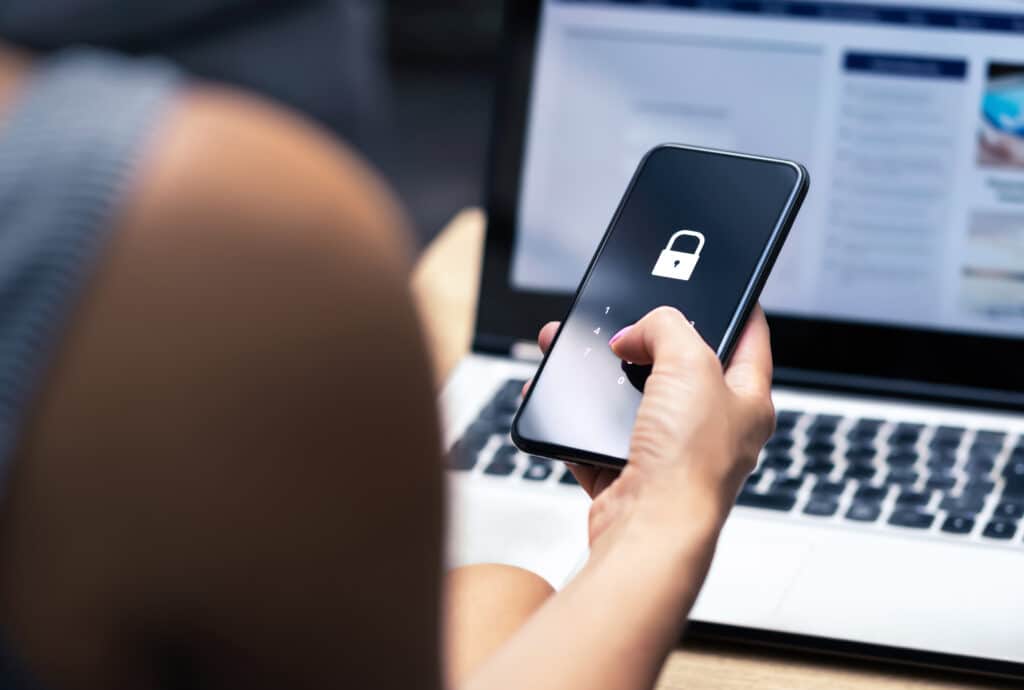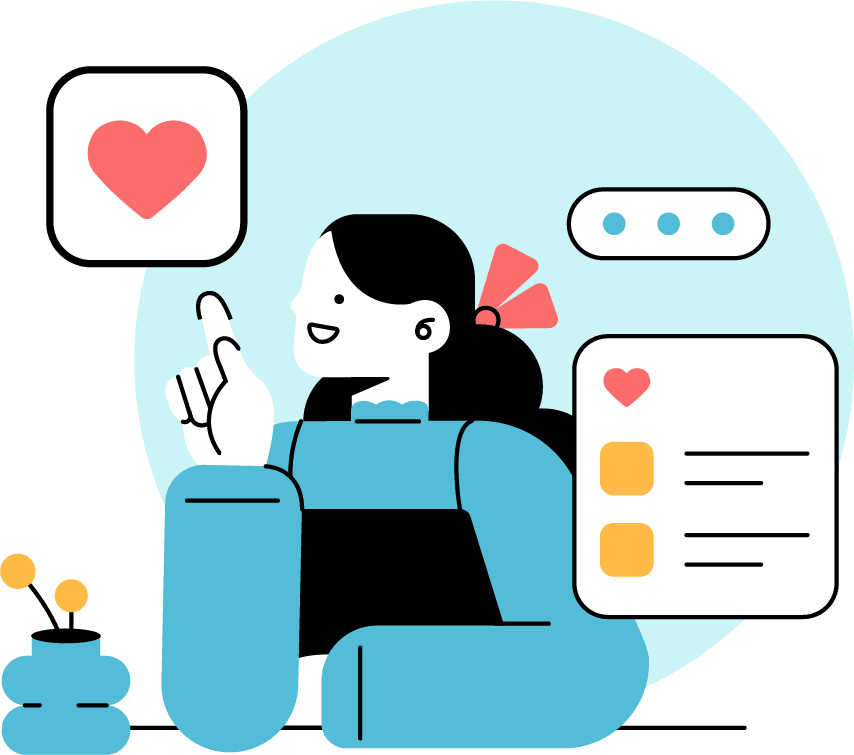The advent of online video chatting drastically changed the mental health care landscape by making therapy more accessible to people who might not otherwise be able to receive it. However, the very same technology that makes virtual therapy possible also creates privacy concerns.
If you’re worried about maintaining privacy during online therapy sessions, there are a few things you can do to create a more protected, private environment.
In this article, we’ll go over some of the best tips out there for ensuring privacy during virtual therapy sessions.
Without further ado, let’s take a look at how to get privacy during virtual therapy sessions.
1. Choose a Room in Your House That Can Be Easily Closed off From the Rest of the Living Space
When you’re considering privacy during online therapy, one of the first things you’ll need to think about is your physical environment. If you have roommates, siblings, or other family members in the house, try to pick a time for your session when they are not likely to be home or awake. And if possible, let them know in advance that you’ll be participating in a therapy session and would like personal space and private time, so they can be respectful of your privacy.
If you live alone, you may still want to choose a physical space in your house that can be easily closed off from the rest of the living space. For some people, this psychologically signals to them that they are in a safe, private space where they can feel free to open up. This could be a bedroom with a door that locks or even a bathroom if necessary. The key is to find a space where you feel comfortable and safe enough to open up about personal matters.
You could also consider using a white noise machine, ambient music, or a fan to help muffle the sound of your voice during your therapy session. This helps ensure that discernable words do not travel beyond the walls of your private room.
2. Use Headphones or Earbuds During Your Therapy Session
Another simple but effective way to create privacy during online therapy is to use headphones or earbuds during your session. This will help muffle any outside noise and make it less likely that someone will overhear your conversation. Just be sure to choose a comfortable pair of headphones that won’t cause pain or fatigue after extended use.
Now, if you are worried that you’ll talk too loudly when you have headphones in, there is a simple solution. You can put one earphone in and leave the other out. This will still help to muffle outside noise and make it more difficult for someone to overhear your conversation.
3. Use a Privacy Screen or Sit With Your Back to a Wall
If you’re worried about someone being able to see what’s on your computer screen during therapy, you can invest in a privacy filter for your laptop or desktop monitor. These filters attach to the outside of your screen and make it difficult for someone to see what’s on your screen unless they are directly in front of it.
Another option is to simply sit with your back to a wall during therapy. This will help to block out any visual distractions and make it more difficult for someone to see your screen. If you’re using a laptop, you can even invest in a privacy filter that attaches to the top of your screen.
If you are concerned about online privacy or having someone identify pieces of your home or personal information from things in the background, you can put a filter on your video feed to blur your background.
These tips can also help you feel like you’re engaging in your therapy appointment in an actual therapist’s office. This feeling of familiarity can offer great comfort and help you to open up in your dedicated safe space.
4. Secure Your Connection
You can also take measures to secure your connection and protect your identity during online therapy sessions. While most online therapy tools must comply with online privacy protection laws to maintain doctor-patient confidentiality, there are still some things you can do to further secure your connection.
For example, make sure you are using a secure Wi-Fi connection, preferably one that is password protected. You can also use a Virtual Private Network (VPN) to encrypt your connection and protect your identity.
When creating an account with an online therapy tool, be sure to use a unique username and password that you do not use for any other online accounts. And if possible, enable two-factor authentication for an extra layer of security.
5. Use the Chat Function
If you’re worried about someone overhearing your conversation during a video call, you can always use the chat function in online therapy tools. This way, you can communicate with your therapist privately without anyone else being able to listen in.
Of course, you’ll want to make sure the chat function is secure before using it. Many online therapy tools use encryption to protect the privacy of chats between patients and therapists. So be sure to check with your chosen tool to see if chat communications are encrypted before using this function.
This can also be useful when your wifi connection is buggy. You can avoid having to repeat yourself over and over again by sending messages back and forth during patches of rough wifi connection.
6. Avoid Using Public Computers or Wi-Fi
If you’re worried about online privacy, it’s best to avoid using public computers or Wi-Fi when participating in online therapy. This is because it’s relatively easy for someone to hack into a public Wi-Fi network and eavesdrop on your conversation.
If you must use a public computer or Wi-Fi, be sure to take extra security measures, such as using a VPN or encrypting your connection. You should also avoid using the video call function and stick to the chat function instead.
7. Be Selective About Who You Share Your Therapy Information With
You should also be selective about with who you share your therapy information. While it’s important to talk to someone about your experiences, make sure you choose someone you trust and who will respect your privacy.
If you’re not comfortable talking to someone about your therapy, you can always keep a journal instead. This way, you can vent all your thoughts and feelings in a safe and private space.
What Are the Advantages and Disadvantages of Virtual Therapy?
When comparing traditional in-person therapy to virtual therapy, there are a few key advantages and disadvantages to consider. Here’s a look at some of the pros and cons of each type of therapy:
Advantages of Virtual Therapy:
1. You can receive therapy from anywhere in the world.
2. It’s more convenient than in-person therapy.
3. You can often receive therapy at any time, 24/7.
4. Virtual therapy is often more affordable than in-person therapy.
5. You may feel more comfortable opening up in a virtual setting.
6. Virtual therapy provides access to therapy for people who otherwise couldn’t go in person.
Disadvantages of Virtual Therapy:
1. You may not have the same connection with your therapist as you would in person.
2. You may have difficulty communicating with your therapist if there is a poor internet connection.
3. You may feel less comfortable opening up in a virtual setting.
4. Virtual therapy may not be appropriate for all types of mental health issues.
5. You may need to try a few different therapists before finding one that’s a good fit.
How to Get the Most Out of Virtual Therapy?
Virtual therapy can be an effective treatment for a variety of mental health issues. But like any type of therapy, it’s important to put in the effort to get the most out of it. Here are a few tips to help you get the most out of virtual therapy:
1. Be Open and Honest
The first step is to be open and honest with your therapist. This means being willing to share your thoughts, feelings, and experiences, even if they’re difficult to talk about. If you’re not honest with your therapist, it’ll be difficult for them to help you.
2. Be Willing to Try New Things
Virtual therapy may be different from traditional in-person therapy, but that doesn’t mean it’s not effective. Be willing to try new things and trust that your therapist is doing everything they can to help you.
3. Be Patient
Change takes time, so be patient as you work through therapy. There may be ups and downs, but trust that the process will eventually lead to positive changes in your life.
4. Follow Through With Homework
Like with any type of therapy, it’s important to follow through with any homework assignments your therapist gives you. This could include things like reading articles or books, practicing relaxation techniques, or journaling.
5. Seek Support From Others
In addition to therapy, it’s also important to seek support from other people in your life. This could be friends, family, or a support group for people with similar experiences. These people can offer additional support and help you through difficult times.
Final Thoughts
When it comes to preserving your privacy during virtual therapy, it’s important to be proactive. Talk to your therapist about what you’re comfortable sharing, and be sure to set up a space that’s private and free from distractions. Therapists will work with you to prepare a setting that is comfortable and conducive to receiving access to mental health care.
Clear Behavioral Health offers multiple virtual therapy programs run by licensed mental health professionals that exclusively work at our facilities. At the end of the day, virtual therapy can be an effective treatment for a variety of mental health issues. With a little effort, you can get the most out of virtual therapy and experience positive changes in your life.






